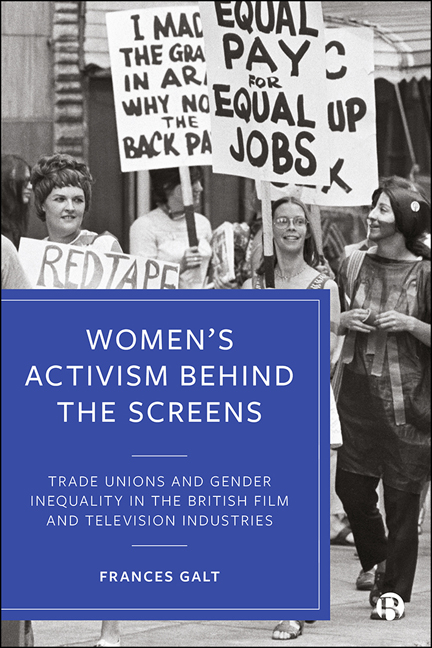 Women's Activism Behind the Screens
Women's Activism Behind the Screens 4 - Remarkable Political Gains? The 1980s
Published online by Cambridge University Press: 17 April 2021
Summary
In her report to the 1985 Annual Women's Conference, interim Equality Officer Diane Abbott concluded: ‘It is clear that women members have made remarkable political gains inside the union … But if you look at mainstream ITV and film production the pattern of womens’ [sic] employment has altered very little in ten years’ (Abbott, 1985). Abbott's observation succinctly captures the trends of continuity and change in the relationship between women and the ACTT during the 1980s. Reflecting on wider trends in the British labour movement, Sarah Boston (2015: 309–11) similarly observed that women workers ‘progressed little between 1976 and 1986 and in important aspects slipped backwards’; for instance, the gender pay gap widened, women's employment declined, and women workers were increasingly concentrated in a narrow range of jobs. However, trade unions laid the ‘groundwork’ for future activity by introducing new structures which provided the ‘channels through which [women] could express their needs and make their demands’ (Boston, 2015: 346).
At the ACTT's first Women's Conference in January 1981, women activists demanded the formalization of women's representation within the union structure to counteract the inertia which had characterized their relationship with the ACTT since 1975. Over the course of the 1980s, four methods of formalization were adopted by the ACTT: the appointment of a full-time Equality Officer in the ACTT's Head Office in 1982; the establishment of a network of local equality representatives, a role which became mandatory in the union's shops from 1986; the introduction of an annual women's conference from 1981; and the increased visibility of women's activity through the union's publications, including a regular equal opportunities page within the journal and the circulation of a newsletter, Equality News. These methods established a network of women activists which coordinated women's activities, facilitated the formulation of policy and advanced women's demands at all levels of the union's structure, from the ACTT's Head Office to the shop floor.
However, the political gains inside the union were undermined by the socio-politico-economic climate of the 1980s that followed the election of Margaret Thatcher's Conservative government in 1979.
- Type
- Chapter
- Information
- Women's Activism Behind the ScreensTrade Unions and Gender Inequality in the British Film and Television Industries, pp. 141 - 172Publisher: Bristol University PressPrint publication year: 2020


